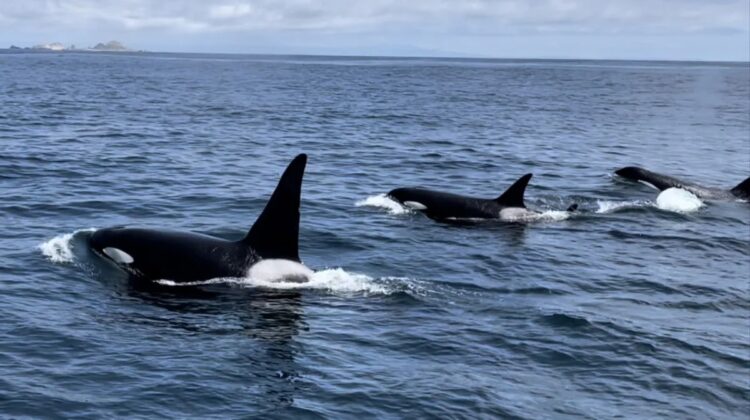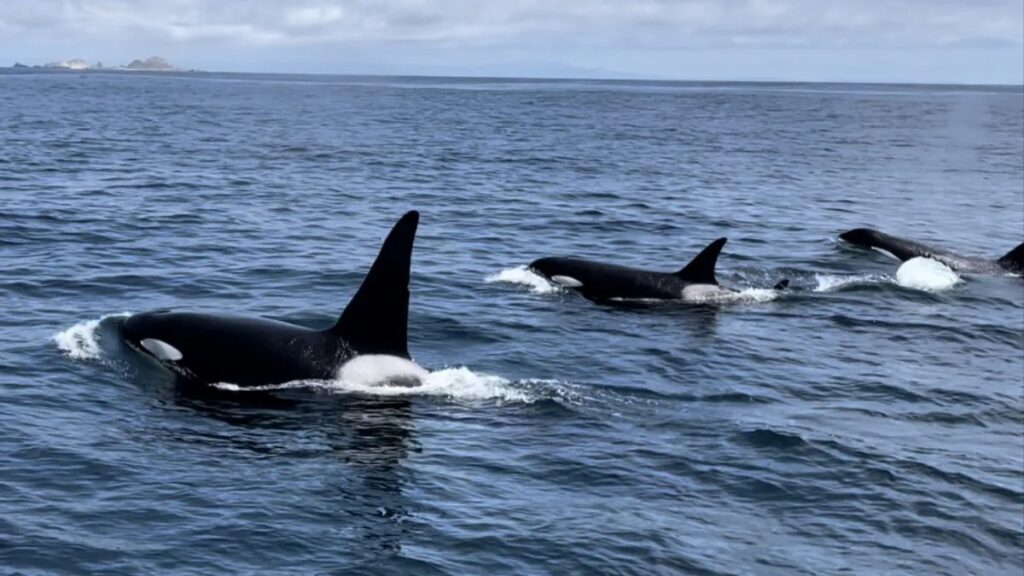
In the vast expanse of the ocean, a chilling encounter has been captured on film, showcasing the methodical and deadly approach of orcas, also known as killer whales, as they target the world’s largest fish—the whale shark. A haunting video has emerged, showing a pod of orcas descending upon a massive whale shark and extracting its liver with chilling precision. While the footage may be unsettling, it offers a rare glimpse into the cunning tactics of these intelligent marine predators, who have learned to target and consume only the most nutritious parts of their prey.
The orcas’ preference for dining on the livers of great white sharks is well-known, with numerous beach discoveries of great white carcasses missing their vital organs. Orcas, despite lacking hands, have evolved a remarkable technique for performing this surgical removal.
When dealing with great whites, orcas have been observed exploiting a phenomenon called “tonic immobility,” where flipping a shark over induces a catatonic state. The orcas use this strategy by ramming into the sharks, disorienting them, and then swimming with them held upside-down in their jaws. This renders the sharks motionless, allowing the orcas to safely access their bellies for the prized liver.
In a new and grisly video captured by James Moskito, the CEO of Ocean Safaris, the same deadly procedure is observed on a whale shark.
Whale sharks, known scientifically as Rhincodon typus, are the largest sharks and fish in the world, second only in weight to the Mola mola, or ocean sunfish. Their colossal size makes them relatively safe from predators, but this encounter with orcas reveals that even being the ocean’s giants isn’t enough protection when these cunning killers are on the hunt.
Moskito’s footage may be the first documented video capturing the predator-prey interaction between orcas and whale sharks. The video shows orcas approaching a whale shark estimated to be about 18 meters (60 feet) in length. One of the orcas latches onto the shark’s underbelly with apparent expertise.
“They came in, they bit the bottom of the whale shark,” Moskito recounted. “Looks like they slurped in the liver, and then the whale shark just fell and descended down, with no movement – I’m assuming it was dead.”
The orcas didn’t stop there; they went on to attack and kill a second whale shark shortly after, painting a grim picture of their deadly capabilities.
This unfortunate fate befalls the gentle giants of the ocean. Despite their massive size, whale sharks are known as filter-feeders, subsisting on plankton, squid, and small fish like sardines.

The knowledge of the nutritional value of livers among orca pods might have spread through cultural transmission, a phenomenon that also underlies their mastery in attacking yachts and damaging their rudders, likely in retaliation for vessel strikes. Targeting the liver makes perfect sense for these intelligent hunters, as these buoyant organs are packed with nutritious oils, providing ample energy for their daily needs.
In this deadly encounter, the orcas demonstrated their prowess as formidable hunters in the vast underwater realm. As we continue to learn more about the intricacies of marine ecosystems, such rare and unsettling encounters serve as reminders of the delicate balance of life in the ocean, where each species plays a vital role in the grand tapestry of nature.

Leave a Reply